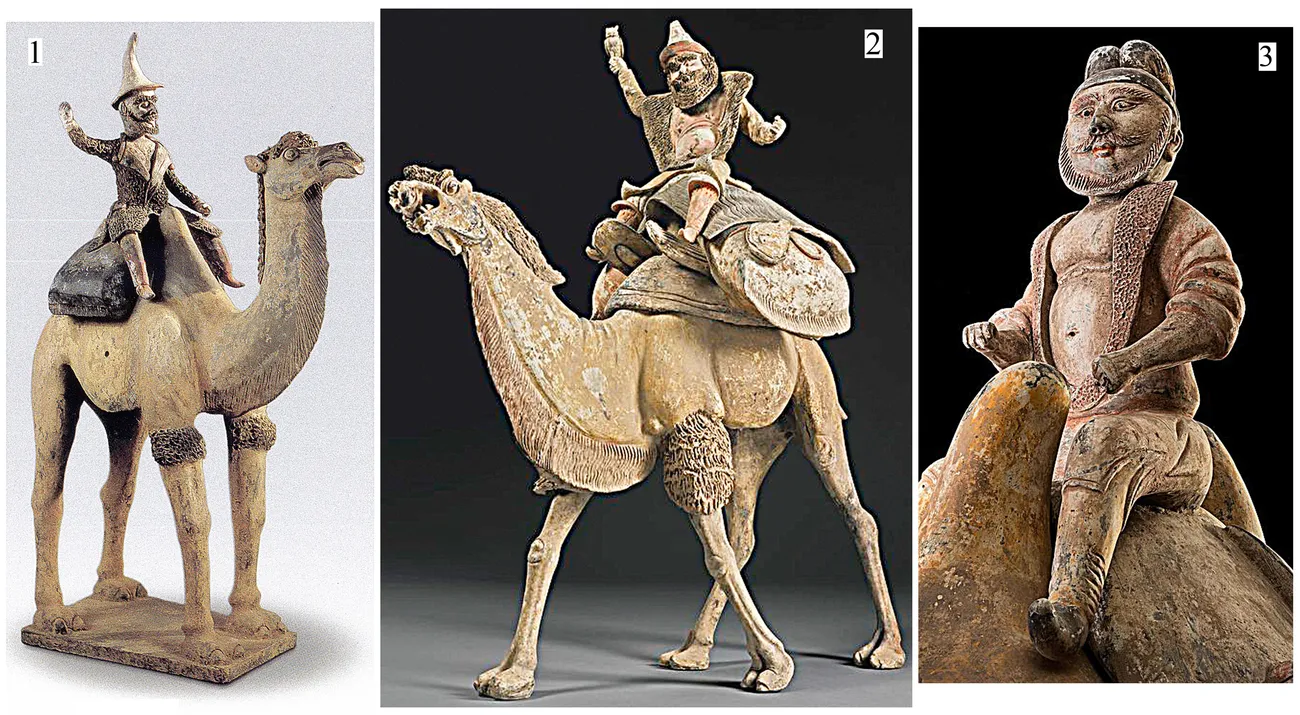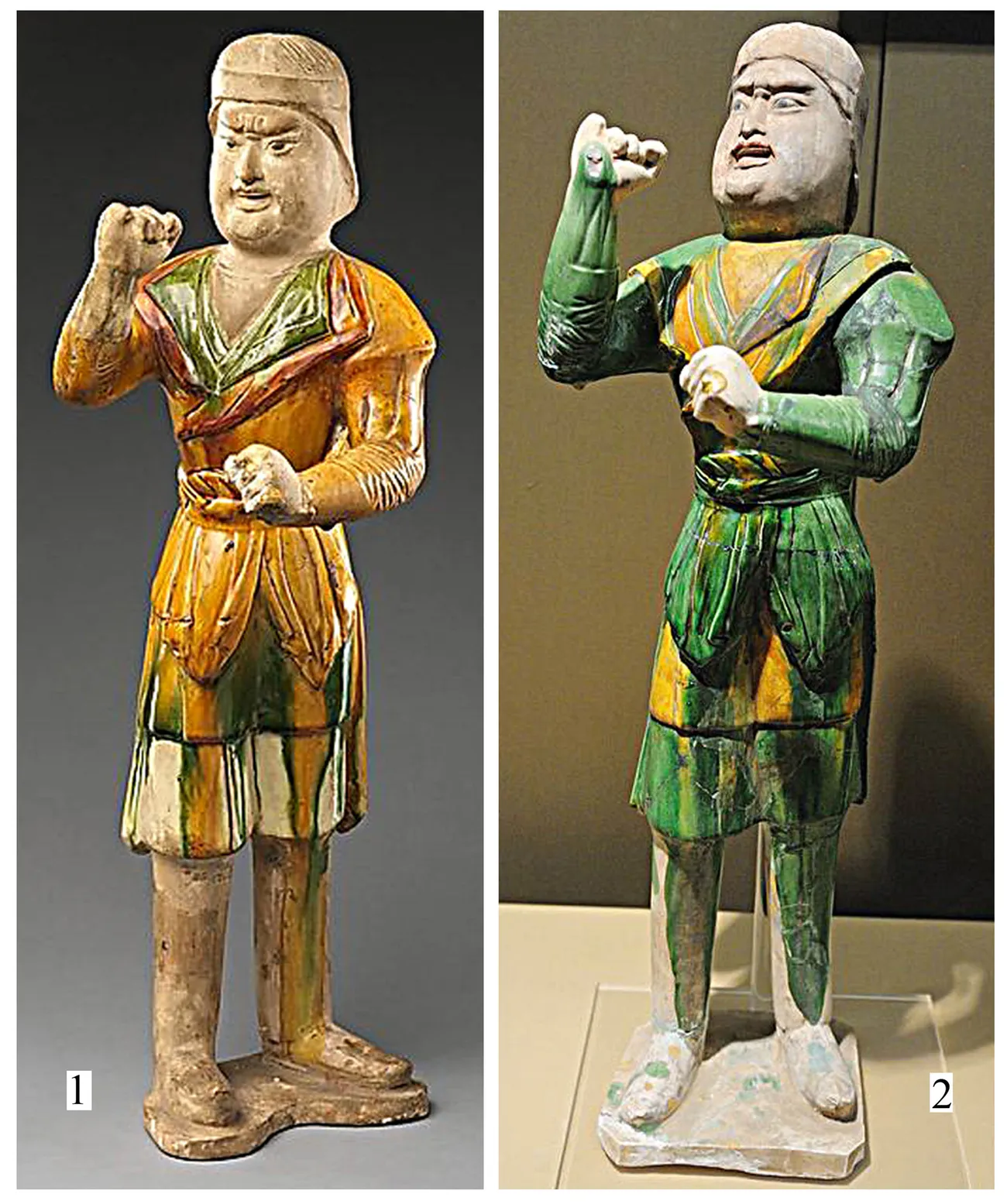Firstly, unlike most images in Sogdia itself, they usually fully retained their shape and often have multi-colored decoration. Secondly, we see the exceptional ethographic accuracy, unique for world art of the early Middle Ages, manifested in the smallest details, including the actual colors, fabric patterns, hairstyles, faces, etc. representing Sogdians’ appearance (as well as other “western and northern barbarians”) by Chinese ceramic artists. Thirdly, although both the terracotta of Sogdia and Chinese mingqi were of a religious character, the former primarily depicted (as in the case of Sogdian painting) deities and mythical and epic characters, often in archaic or foreign costumes with the fantastic details (and similarly, in painting, rulers and the aristocracy – the clergy less often.
And very rarely the ordinary peoples are repesented in “crowd scenes”: the episodes from epic and foreign literature, receptions of guests, hunting, etc.). In mingqi, however, on the contrary, we usually see Sogdians of a completely different social status, the ones who actually arrived in China – merchants, caravan cameleers, musicians, dancers and servants of wealthy merchants – and what is more, these people are busy with their ordinary business. The Chinese figurines provide much more visual material than the objects from their homeland to understand the realities of Sogdians’ life and culture.
You can learn more about the topic in the book-album "Sogdia: the Heart of the Silk Road" (XXXV volume) from the series "Cultural Legacy of Uzbekistan in the World Collections".
The main sponsor of the project is the oilfield services company Eriell-Group.


